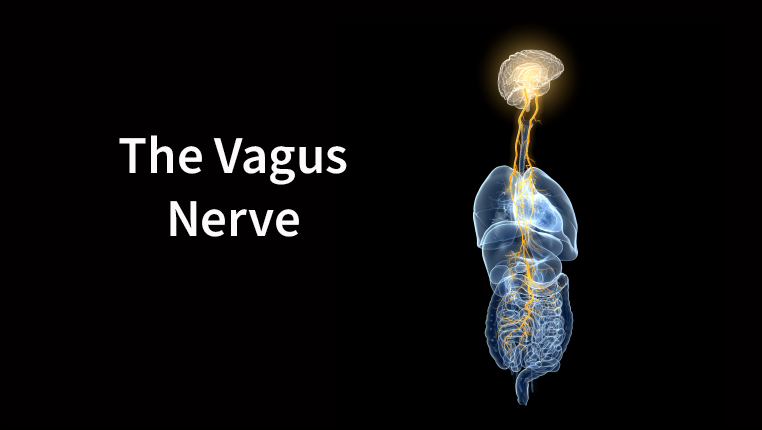The Top-Performer series highlights papers published by Aging that have generated a high Altmetric attention score. Altmetric scores, located at the top-left of trending Aging papers, provide an at-a-glance indication of the volume and type of online attention the research has received.
Read Aging’s Top 100 Altmetric papers.
—
Among the cranial nerves, the vagus nerve has the largest distribution in the body. Extending from the brain to the abdomen, its name is derived from the Latin word vagari—which means “to wander.” This wandering nerve serves as part of the involuntary, or autonomic, nervous system. Vagus nerve signaling is responsible for a number of important autonomic bodily functions, including lung function, heart rate, inflammation, brain/gut communication, mood, and even the consolidation of memories.
Human aging is accompanied by progressive autonomic changes, including increases in sympathetic nervous activity (“fight or flight” responses) and decreases in parasympathetic nervous activity (“rest and digest” responses). Considerable changes in autonomic nervous system activity can have negative effects on heart function, emotion, mood, and gut function—not to mention, on overall quality of life and medication consumption.
Transcutaneous Vagal Nerve Stimulation (tVNS)
In efforts to boost parasympathetic activity and decrease sympathetic activity, interventions such as vagus nerve stimulation (VNS) have been developed. VNS is a highly invasive intervention, which involves surgically implanting an electrode around the cervical vagus nerve and a generator unit in the chest’s thoracic wall—quite an unappealing procedure. Researchers have found that non-invasive transcutaneous vagal nerve stimulation (tVNS) therapy (sessions of an acute electrical pulse focused on the tragus of the outer ear) is a safer and simpler intervention. In non-patient groups treated with tVNS, positive effects on autonomic functions have been reported.
“tVNS is a simple, non-invasive and inexpensive therapy that involves stimulating the auricular branch of the vagus nerve (ABVN) at outer parts of the ear, conferring autonomic benefits in healthy volunteers [10].”
Previous research has shown that tVNS significantly reduces sympathetic activity in healthy participants and boosts measures of parasympathetic activity. However, there are only a few studies available which detail the effects of tVNS in healthy older participants.
“Despite this evidence, there is little work examining the autonomic implications of administering tVNS in healthy older individuals who are undergoing age-associated shifts towards sympathetic prevalence.”
The Study
In 2019, researchers from the United Kingdom’s University of Leeds and University of Glasgow reported the effects of tVNS in participants 55 years of age and older in three studies. Their paper was published in Aging’s Volume 11, Issue 14, and entitled: “Effects of transcutaneous vagus nerve stimulation in individuals aged 55 years or above: potential benefits of daily stimulation.” To date, this research paper has received an impressive Altmetric Attention score of 350.
In the first study, the researchers observed the effects of acute, single-session tVNS on cardiovascular autonomic function compared with the effects of sham (earlobe/placebo) stimulation among 14 healthy participants 55 years of age and older. They collected baseline values and measured heart rate variability (HRV) and baroreflex sensitivity.
“Since not all participants responded to tVNS, we examined if it was possible to identify potential tVNS responders from baseline parameters.”
In the second study, the researchers explored the effects of acute, single-session tVNS on autonomic function in the same age group and expanded the sample to 51 participants. The third study examined 26 participants in the same age group when administered tVNS for 15 minutes once per day for two weeks. The researchers reported the impacts of daily tVNS in measures of autonomic function, health-related quality of life (QoL), mood, and sleep.
“Transcutaneous vagal nerve stimulation (tVNS) acutely administered to the tragus in healthy volunteers aged ≥ 55 years was associated with improvements in spontaneous cardiac baroreflex sensitivity and HRV.”
Conclusion
“For the first time, we have shown that age-related autonomic, QoL, mood and sleep changes may be improved with tVNS administered every day for two weeks.”
Although the researchers note that there are opportunities for improvement in this study design and further research is needed, participants reported improved sleep, depression, tension, vigor, and mood disturbance after two weeks of daily tVNS.
“These findings therefore suggest that daily tVNS may be an effective means of improving aspects of everyday life in this age group.”
Click here to read the full research paper, published by Aging.
—
Aging is an open-access journal that publishes high-quality research papers bi-monthly in all fields of aging research and other topics. These papers are available to read at no cost to readers on Aging-us.com. Open-access journals offer information that has the potential to benefit our communities from the inside out and may be shared with friends, neighbors, colleagues, and other researchers, far and wide.
For media inquiries, please contact [email protected].

